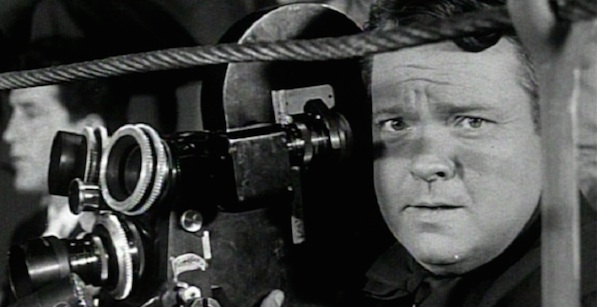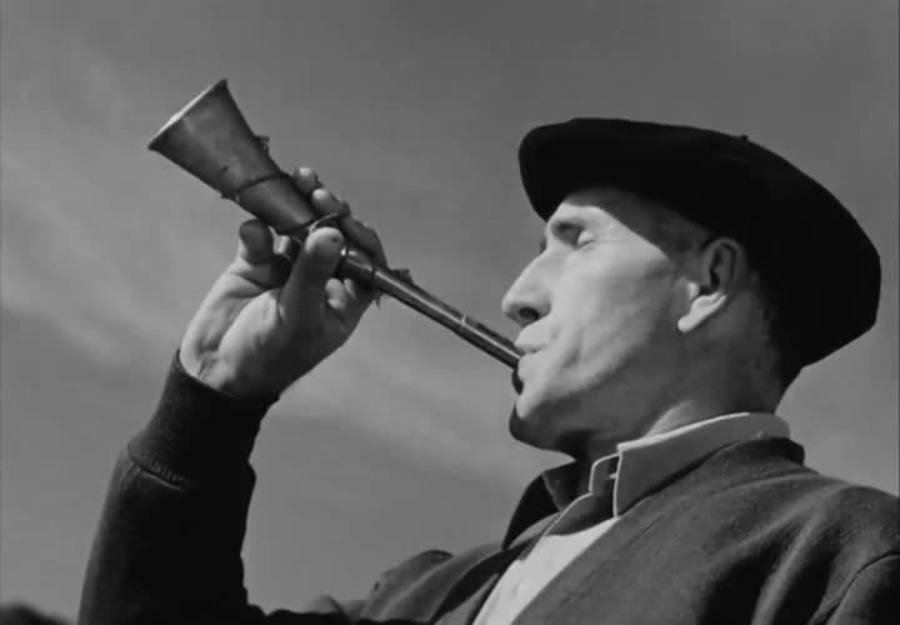[Editor’s note: This feature marks the fifth piece in an Orson Welles series celebrating the 100th anniversary of the filmmaker’s birth, which is today. See previous, “Orson Welles: The Enigmatic Independent, “The Orson Welles Bookshelf,” “Rosenbaum on Welles at 100” and “Schooled by Orson Welles: Roberto Perpignani.”]
When handed the raw materials from an unfinished documentary about Elmyr de Hory, an art forger whose life was being written up by biographer Clifford Irving, Orson Welles took the opportunity to make something far beyond the concept of the traditional documentary. F for Fake has been called the Orson Welles’ first essay film, a true enough statement if you limit the accounting to feature films, but he had been doing short-form non-fiction since 1955, when he made Around the World with Orson Welles (a.k.a. Around the World) for British television.
It was ostensibly a series of travelogues, shot on location with Welles as tour guide, host, and narrator. Welles himself described them as “all sort of home movies—a vacation documented…,” but these are sort of home movies that only Welles could make. They are built on Welles’s public persona as much as on his directorial personality. He is “as always, obediently yours,” the worldly yet personable host who casts a spell with his voice, disarms with a boyish grin and invites the audience into his confidence as he tosses out cultural observations and historical asides.
Twenty-six episodes were commissioned. Six were shot, in Vienna, Lurs, Madrid, London, Saint-German-des-Pres in Paris and the Basque Country along the border of Spain and France. Welles pieced them together like jigsaw puzzles in which only he knew what the finished picture would look like but did not finish them all before the broadcast deadline. Six were broadcast in all, with some of the episodes completed by the production company, including an alternate version of the Pays Basques episode featuring alternate interviews shot by Welles. One unfinished episode, shot in Lurs and focused on a notorious murder case, was reconstructed as part of a 2000 documentary, The Dominici Affair by Orson Welles, by Christopher Cognet.
Compare the two versions of Pays Basques. It’s not hard to pick out which one Welles lavished his time on and which was (according to historians Jean-Pierre Berthomé and François Thomas) constructed by the production company’s editors from alternate footage. Both share the same introduction and epilogue, clearly designed and completed by Welles. But one is centered on a pair of rather static interviews, with Welles discussing Basque life with a pair of English speakers in extended conversations. The camera hardly moves and the conversations, though interesting and energized by Welles’ enthusiastic engagement, play out as if the rushes had simply been assembled and cut into the episode.
Contrast that with his version (the second broadcast on British TV but, appropriately, the debut episode in this presentation), with Welles strolling briskly yet unhurried through the culture, posing questions and turning to the audience with comments and asides. He drafts a young American boy raised in Basque Country, Chris Wertenbaker, to serve as interpreter and cultural expert and their byplay is relaxed and affectionate. The entire episode has a leisurely atmosphere even as it moves swiftly and effortlessly from one topic to another and back again, introducing the viewer to what seems like an entire community along the way, from a priest who relaxes with an impromptu match of Pecote (a game similar to jai alai) to a five-year-old boy who speaks with Welles in French.
Don’t expect the dramatic cinematic techniques of his fiction films that we think of as “Wellesian.” There’s no elaborate camerawork or lighting and the editing is for content and clarity and rhythm, not dramatic effect. But make no mistake: these are Welles productions. He doesn’t hide the camera crew, and in fact stands next to the camera in some the interviews, leaning on it like it was the most natural thing to bring to a conversation. Other filmmakers would discard footage of one camera picking up the other camera crew. Welles foregrounds the machinery of moviemaking, reminding us that he’s brought a crew with him, and he manipulates his documentary footage as aggressively as he does in his fictional storytelling. In Revisiting Vienna, the first episode that Welles shot but the third broadcast, he steps into the opening scene with a handheld movie camera under his arm and shoots an interview in a Vienna pastry shop with his camera crew perfectly framed in a massive mirror behind his subject. [This episode was assumed lost until 2011, when a copy was discovered in archives at the Wisconsin Center for Film and Theater Research in Madison, Wisconsin; this is first chance most of us have to see it.]
Not content to simply play master of ceremonies, he edits interviews, shapes scenes to play more easily and intimately, rewrites his comments and reconstructs conversations to fit his needs. In Madrid Bullfight, Welles recreates a day in the bullring in miniature, matching location shots with a minimalist studio recreation of Welles narrating from the stands. At times the camera lingers on Welles, letting the power of his descriptions, the expressiveness of his gesture and his glances to the camera as he shares the moment with the audience—all of written and recorded much later—carry the drama. Shooting reverse shots of an interviewer or a commentator after the fact is common practice. What’s uncommon is shooting them weeks later in an entirely different location and blurring the change of scenery so effectively that audiences never notice.
Madrid Bullfight is one of the episodes that the production company, Associated-Rediffusion, was forced to finish with addition footage. They added the first half, featuring Kenneth and Elaine Tynan discussing the history and culture of bullfighting, to fill time until the sequence completed by Welles takes over. The contrast is staggering, the difference between an anonymously professional assignment and a personal essay written with camera and commentary and editing table and presented as if in conversation with the viewer.
These are unhurried productions. They slow to take the time to see the sights and converse with the people he meets, and they bring the first person presence and easy authority of Welles’ radio productions to the screen. Just as his affection for the young comes through in Pays Basque, his regard for the aged comes through in his warm, generous interviews with the World War I widows and veterans of Chelsea Pensioners. Welles laughs more here than in any other production he’s ever made, and it is all in respectful affection for his guests. The relaxed nature guides the pace and atmosphere of the pieces. He’s a storyteller, slipping into anecdotes and illustrative tales and he makes it all sound off-the-cuff, extemporaneous, like he was personally guiding you through a place he knows well. That’s always been one of Welles’ gifts and it’s the foundation on which this series is built.







